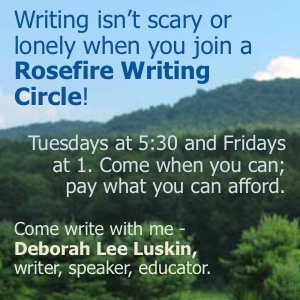By Helen Wachtel
Twenty years ago when my eldest daughter started college, the cost of tuition, fees and room and board at a non-profit private university was $31,590 per year, or $126,360 for four years. The cost of tuition and fees at a four-year public non-profit college was $5,020 per year or $20,080 if the student finished in four years. These sums seemed astronomical then, as they still do now. We worried about how we’d be able to afford this on our modest Vermont incomes since our youngest was to begin the following year as well. Both girls wanted to go to school in Boston and had been accepted to the colleges of their choice. This was a new experience for us, sending our children away to college.
This was not the way my husband and I, Baby Boomers from an art high school in New York City, received our education. A carpenter/builder/artist, my husband attended college, but did not complete his degree. Going to school was never really ‘his thing’. His talents lie in using his hands, creativity, and artistic eye to teach himself how to build things. A prolific reader with an amazing memory, he is self-taught in almost every regard.
The way I was able to get an education was in degrees. (No pun intended.) Throughout my life, I worked full-time during the day and attended school at night. I persisted until I had earned my Associates, Bachelor’s and Graduate degrees. Until Graduate School, I didn’t have to take out loans to pay for my schooling. While we didn’t get an ivy league education, or the opportunity to live away from home, every book we read, every course we took, every person we met, every ‘ah-ha’ moment we experienced, were our “mentors”.
I was floored recently when I read some reports from the College Board, the non-profit organization that tracks and reports on trends in higher education. In twenty years, with the increased enrollment and rapidly rising college prices, the cost for that four-year non-profit “away” college has become $48,510 per year or $194,040 for four – a 53.5% increase. Correspondingly, the cost of tuition and fees at a four-year public college costs (in 2018 dollars) $10,230 per year or $40,920 for four years – a 103% increase. The reason that the cost of public colleges skyrocketed, was due to a weak economy, smaller state funding, and higher administrative costs. Public colleges tend to have smaller alumni endowments with which to award institutional grants and financial aid and have had to spend more on athletic programs, gourmet food offerings, and million-dollar recreational facilities to attract students to their schools. With less money to pay for these things, the cost is passed on to the student. If parents and family are unable to help, college students today are increasingly taking on debt. So much debt that they will likely be unable to afford to purchase a home. So how can we help? One way is Scholarships. Scholarships don’t have to be re-paid.
It is valid for you to ask, “is it worth going to college?” The College Board’s publication, “Education Pays 2016: The Benefits of Higher Education for Individuals and Society”, reports that “(1) Individuals with higher levels of education earn more, pay more taxes, and are more likely than others to be employed; (2) Median earnings increase with level of education, but there is considerable variation in earnings at each level of educational attainment; (3) Earning an associate degree or even having some college without a degree also has a considerable payoff. The actual return to the investment in different levels of postsecondary education may not be as different as some charts suggest, since it takes less time and costs less to earn a shorter-term credential. On average, the number of years from first enrollment to accumulating enough of an earnings premium to make up for paying tuition and taking time out of the labor force, is similar for those who earn associate degrees and those who earn bachelor’s degrees. Although many occupations are only open to those with specific degrees or certificates. (4) College education increases the chance that adults will move up the socioeconomic ladder and reduces the chance that adults will rely on public assistance; (5) College education is associated with healthier lifestyles, reducing healthcare costs. Adults with higher levels of education are more active citizens than others and are more involved in their children’s activities. (6) The overall patterns are clear and dramatic – more education means increased opportunities. Although it requires a considerable investment of dollars, time, and effort, higher education measurably improves the lives of most who participate. It pays off very well for most students, both financially and in terms of personal and intellectual development. Higher education improves people’s lives, makes our economy more efficient, and contributes to a more equitable society.”
The old saying, “it takes a village to raise a child” still rings true. We can help tomorrow’s students who will be our future doctors, nurses, engineers and entrepreneurs by supporting organizations that award funds for scholarships. One such organization, among the several local groups who invested in my daughter’s education was the American Association of University Women (AAUW). The AAUW was there for my daughter twenty years ago. Today she is a doctor-surgeon and I’d like to pay it back by paying it forward. Come to my Tag Sale on July 20th from 8:00AM – 3:00PM in the Community Room of The Brattleboro Savings & Loan, 221 Main Street. Buy some thing or make a donation. All proceeds will go to the AAUW scholarship fund. It’s the best investment you can make.



